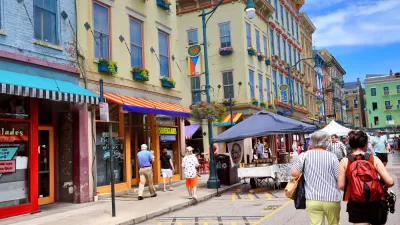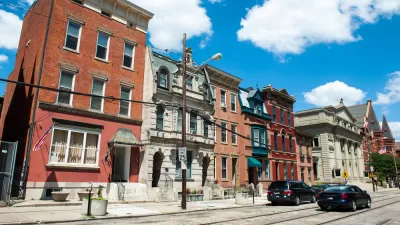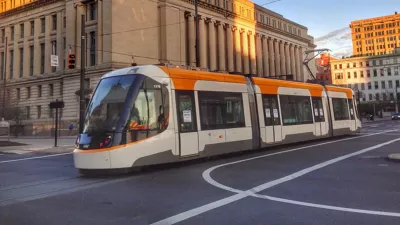Craig Chester describes the "unique partnership" between city leaders, local corporations and private developers that has helped transform Cincinnati’s Over-the-Rhine neighborhood into "one of America’s greatest smart growth success stories."
While Over-The-Rhine's (OTR) transformation from impoverished former industrial hub to thriving locus of redevelopment may be a common storyline among America’s urban neighborhoods, the partnership that helped spur the area's turnaround is quite unique, says Chester.
Despite decades of disinvestment and population loss, "Redevelopment visionaries saw the potential for revitalizing the neighborhood based around the existing historic buildings and the increasing demand for walkable urban neighborhoods close to job centers and entertainment," explains Chester. "The only thing missing was the organization and financial infrastructure on the ground to make it happen."
"That changed in 2003 with the founding of the Cincinnati Center City Development Corporation (3CDC), a uniquely structured non-profit development corporation that works in close collaboration with both public officials and major area employers including Kroger, Procter & Gamble and PNC Bank, among others. All the parties share a collective vision for a safe, vibrant, economically resilient OTR neighborhood as a catalyst for civic improvement in downtown Cincinnati."
"What sets 3CDC apart from traditional developers are the unique financing mechanisms available due to the close collaboration with corporate leaders and local officials."
"Since 2004, 3CDC has invested over $255 million in the OTR neighborhood. That includes about $64 million in public support from the City of Cincinnati, which aids in ‘gap financing’ of loans for development. According to 3CDC, these projects have:
- Restored or in process of restoring 107 historic buildings
- Developed or in process of developing 496 new and rehabbed residential units
- Developed or in process of developing approximately 127,000 SF of new and renovated commercial space
- Developed or in process of developing 869 public parking spaces in lots and garages
- Improved streetscapes
- Created an eight acre civic green space"
FULL STORY: Public-private partnerships lead the way in a Cincinnati neighborhood’s revival

Alabama: Trump Terminates Settlements for Black Communities Harmed By Raw Sewage
Trump deemed the landmark civil rights agreement “illegal DEI and environmental justice policy.”

Planetizen Federal Action Tracker
A weekly monitor of how Trump’s orders and actions are impacting planners and planning in America.

Why Should We Subsidize Public Transportation?
Many public transit agencies face financial stress due to rising costs, declining fare revenue, and declining subsidies. Transit advocates must provide a strong business case for increasing public transit funding.

Understanding Road Diets
An explainer from Momentum highlights the advantages of reducing vehicle lanes in favor of more bike, transit, and pedestrian infrastructure.

New California Law Regulates Warehouse Pollution
A new law tightens building and emissions regulations for large distribution warehouses to mitigate air pollution and traffic in surrounding communities.

Phoenix Announces Opening Date for Light Rail Extension
The South Central extension will connect South Phoenix to downtown and other major hubs starting on June 7.
Urban Design for Planners 1: Software Tools
This six-course series explores essential urban design concepts using open source software and equips planners with the tools they need to participate fully in the urban design process.
Planning for Universal Design
Learn the tools for implementing Universal Design in planning regulations.
Caltrans
Smith Gee Studio
Institute for Housing and Urban Development Studies (IHS)
City of Grandview
Harvard GSD Executive Education
Toledo-Lucas County Plan Commissions
Salt Lake City
NYU Wagner Graduate School of Public Service





























